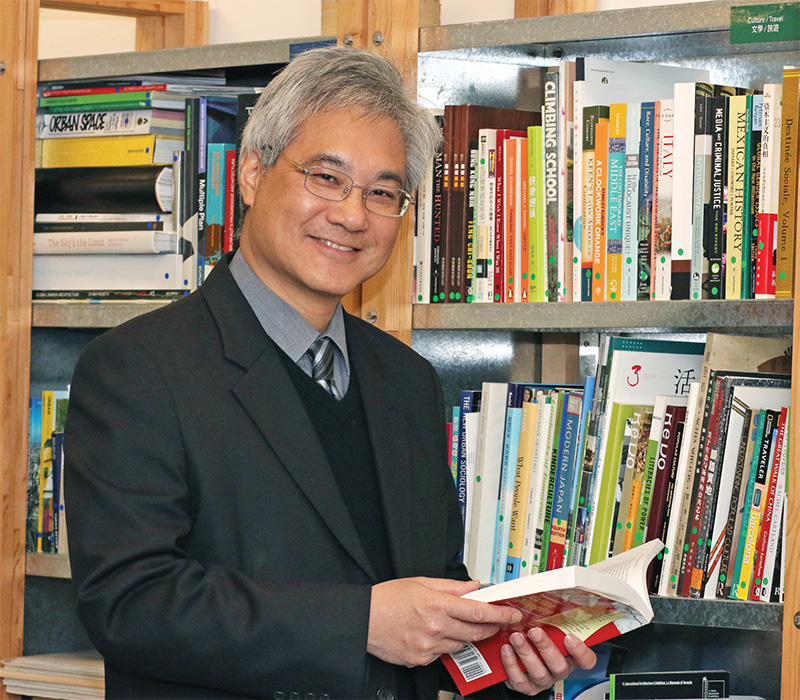
Mr KK Ling spoke to PolyU Milestones about recently taking on his new role at PolyU’s Jockey Club Design Institute for Social Innovation (J.C.DISI) and Hong Kong’s unprecedented “double-ageing” of people and buildings.
Mr Ling is Director of J.C.DISI and Professor of Practice (Planning) at the Department of Land Surveying and Geo-Informatics, and has had a distinguished career in shaping the urban environment. He retired in 2016 from his position as Director of Planning for the HKSAR Government and received the Silver Bauhinia Award in 2017.
What attracted you to J.C.DISI?
When considering the post, I was attracted by the term “social innovation”, which is the belief that the community can be motivated to identify and provide solutions to social problems. People are realising that they can’t leave it up to the government and the market to solve all such problems. And the so-called “third sector” – NGOs, academic institutions, professional bodies and visioned individuals – can come up with innovative ideas and help in that regard. Ultimately, the government, the business sector and this “third sector” can collaborate together in implementing the solutions.
This was a very attractive proposition, and quite different from what I did with the government in a 33-year career. That inspired me to take up the role of J.C.DISI Director in December 2017 as a new chapter of my continuing service to the community.
Is there a particular area of social concern that you intend to focus on?
The strategic focus I’ve chosen for J.C.DISI is the “double-ageing” problem in Hong Kong. Our people are getting older and our building stocks are ageing. This problem (first) came to my attention when I was Director of Planning leading the formulation of the strategic plan for Hong Kong entitled “Hong Kong 2030+”.
Imagine Hong Kong in 30 years: a large number of people aged over 85 are living in high-rise and high-density buildings more than 70 years old. Their properties may become liabilities rather than assets. The combined impact of “double ageing” will create a huge social problem, which if not tackled properly will endanger Hong Kong’s sustainability.
PolyU is very well positioned to change this situation because we have so many faculty members with rich expertise and a very good tradition of collaborative applied research. Given the density of Hong Kong and the complex pattern of building ownership with multiple owners in the same buildings, we have the most complicated city “laboratory” in the world. That will provide us a very good research environment for pragmatic solutions.
What are the key urban-planning challenges facing Hong Kong’s ageing population?
Ageing is a long process influenced by almost every aspect of our society. Throughout history, cities have never been built for the elderly. I would argue that now is the first time in human history that cities are challenged with the need to accommodate such a high proportion of elderly population. Problems thus abound.
As a town planner, I used to think 15 to 20 years ahead to decide what we needed to do now. We must be conscious of enabling the built environment be adaptive to the changing needs of the population over time. This involves a change in mind-set, design guidelines and public policy.
Take a simple but usually neglected example, there is the policy that a children’s playground should be provided in every public park, but there is no requirement for an elderly playground. Even though exercise gear is provided for elderly in some of our parks, the overall ambience is not particularly inviting. Could research and innovative design change the present situation? Should such changes eventually become part of the design guidelines for our public parks? This is only one of the many areas that require social innovation.
What policy innovations will be needed to overcome the “double-ageing” challenge?
The government and the community have already done a lot to make Hong Kong more ageing-friendly, but more is needed. I advocate that the “double ageing” issue should be tackled with a “double smart” approach, i.e. “smart ageing” and “smart city technology”.
We should also be mindful of preparing our city to serve the elderly of tomorrow, who will be better educated, more ready to master technology, more healthy and will probably have improved longevity but with weaker traditional family support. They will have different needs and expectations.
My aspiration for J.C.DISI is that, instead of taking on individual projects and programmes, we should focus on the generalisability of our social innovation research and practice so that our findings and prototyping can become part of public policy and operational guidelines for professional disciplines. That is why I find the work of J.C.DISI meaningful, challenging and interesting.
Social innovation projects jointly conducted by PolyU and the Royal College of Art’s Helen Hamlyn Centre for Design
New colour scheme for bed space in elderly care homes
The existing colour scheme of the bed spaces in elderly care homes is rather dull, resembling hospitals rather than homes. The research and design team came up with a new colour palette, using a greater variety of colours to decorate the sleeping and living areas and provide more visual stimuli to the elderly.
Tableware designs for better dining experience
Elderly with reduced hand strength may experience difficulty in gripping the bowl, plate and spoon using existing tablewares. The newly designed tableware set will enable the elderly to have a more comfortable dining experience.
Design features:
Bowl: Landscaped at the bottom, making it easier to hold
Plate: Wider edge design to allow food to roll into the spoon
Spoon: Larger and more comfortable handle


